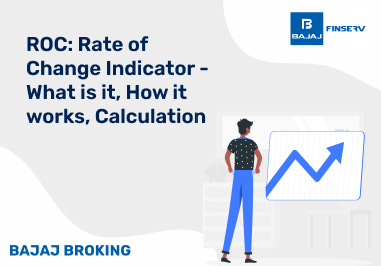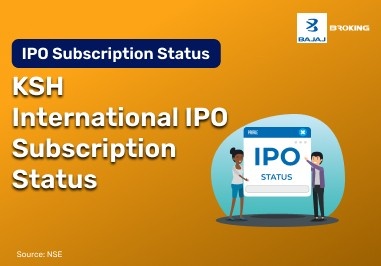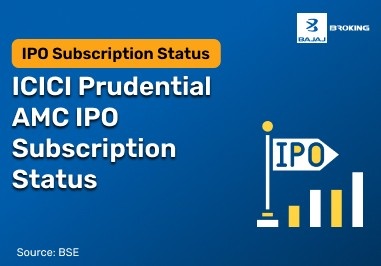Tax planning is an essential part of personal finance, helping individuals reduce tax liability while savings. In India, various tax-saving instruments and deductions under the Income Tax Act can help taxpayers plan efficiently. Let's explore the best tax-saving strategies to make the most of available deductions and exemptions.
Tax Savings and Investment Planning
Effective tax-saving begins with smart investment planning. Taxpayers should align their investments with financial goals while taking advantage of deductions offered under different sections of the Income Tax Act. A well-planned tax-saving strategy ensures wealth creation and financial security over time.
Understanding the Basics of Income Tax in India
The Indian tax system provides taxpayers with multiple exemptions and deductions to reduce their taxable income. Choosing the right tax-saving options ensures financial security while minimizing tax outflow. Taxpayers should also be aware of the latest tax regulations to maximize their benefits.
Tax-Saving Options Under Section 80C
Section 80C of the Income Tax Act allows taxpayers to claim a maximum deduction of Rs. 1.5 lakh per year on eligible investments and expenditures. This section offers multiple tax-saving avenues catering to different risk appetites and financial goals. Lets have a look:
- Provident Fund (PF) and Employee Provident Fund (EPF)
The Provident Fund (PF) and Employee Provident Fund (EPF) are among the most secure and widely used tax-saving instruments under Section 80C. These are government-backed retirement savings schemes where both employees and employers contribute a fixed percentage of the employee’s salary.
- Key Benefits:
- Tax Benefits: Employee contributions qualify for a tax deduction under Section 80C, reducing taxable income.
- Long-Term Security: The accumulated amount, including interest, is tax-free at maturity if withdrawn after five years of continuous service.
- Employer Contribution: Employers also contribute an equal portion to EPF, boosting overall savings.
- Public Provident Fund (PPF)
The Public Provident Fund (PPF) is a government-backed, long-term savings scheme that offers tax-free returns and guaranteed benefits.
- Key Benefits:
- Tax-Free Returns: Both interest earned and the maturity amount are exempt from tax.
- Long-Term Investment: A 15-year tenure ensures wealth accumulation, with partial withdrawals allowed after five years.
- Secure and Stable: Backed by the government, making it a risk-free investment.
- National Savings Certificate (NSC)
The National Savings Certificate (NSC) is a fixed-income investment scheme that provides guaranteed returns along with tax benefits.
- Key Benefits:
- Fixed Lock-in Period: NSC has a five-year lock-in period, making it a medium-term investment.
- Tax Benefits: Investments up to Rs. 1.5 lakh qualify for a deduction under Section 80C.
- Interest Reinvestment: The accrued interest is automatically reinvested and also qualifies for tax deduction.
- Tax-Saving Fixed Deposits (FDs)
Tax-Saving Fixed Deposits (FDs) are an excellent option for risk-averse investors looking for guaranteed returns with tax benefits.
- Key Benefits:
- Secure Investment: Provides stable and predictable returns.
- Lock-In Period: Minimum five-year lock-in period is required to qualify for tax benefits.
- Tax Deduction: Principal amount invested (up to Rs. 1.5 lakh) is eligible for deduction under Section 80C.
- Equity-Linked Savings Scheme (ELSS)
The Equity-Linked Savings Scheme (ELSS) is a tax-saving mutual fund that offers high return potential.
- Key Benefits:
- Shorter Lock-In Period: ELSS has a minimum lock-in of three years.
- Market-Linked Returns: Investments are made in equity markets, providing higher growth potential.
- Dual Benefit: Tax savings and wealth creation over the long term.
- Life Insurance Premiums
Life insurance policies not only provide financial security to dependents but also qualify for tax benefits under Section 80C.
- Key Benefits:
- Tax Deduction: Premiums paid for life insurance policies qualify for a deduction up to Rs. 1.5 lakh.
- Financial Protection: Ensures family members are financially secure in case of an unfortunate event.
- Variety of Plans: Includes term insurance, whole life insurance, and ULIPs.
Life insurance is an essential part of financial planning, ensuring protection along with tax-saving benefits.
Additional Tax-Saving Investments Beyond Section 80C
Apart from Section 80C, there are several other tax-saving investment options available under different sections of the Income Tax Act. These investments provide additional deductions and exemptions, helping taxpayers further reduce their taxable income while securing their financial future.
- Home Loan Interest Deductions (Sections 24(b) & 80EEA)
- Homebuyers can claim a deduction of up to Rs. 2 lakh per year on home loan interest under Section 24(b).
- First-time homebuyers can avail of an additional deduction of Rs. 1.5 lakh under Section 80EEA, provided the loan amount does not exceed Rs. 45 lakh.
- These deductions significantly reduce the cost of homeownership and promote investment in real estate.
A home loan serves a dual purpose: fulfilling homeownership dreams and reducing tax liability. Under Section 24(b), taxpayers can claim deductions on the interest component of their home loan up to Rs. 2 lakh annually. Moreover, first-time homebuyers benefit from Section 80EEA, which provides an additional deduction of Rs. 1.5 lakh, making home loans an attractive tax-saving option.
- Health Insurance Premiums (Section 80D)
- A deduction of up to Rs. 25,000 is available for health insurance premiums paid for self, spouse, and children.
- For senior citizens, the deduction extends up to Rs. 50,000.
- Preventive health check-ups qualify for a deduction of Rs. 5,000 within the overall limit.
Health insurance is an essential financial tool that safeguards individuals from rising medical costs while offering tax benefits. Under Section 80D, taxpayers can claim deductions on premiums paid for family members, including parents. Senior citizens can avail a higher deduction, making health insurance a must-have investment for tax and financial security.
- National Pension System (NPS) Benefits
- Contributions to NPS qualify for deductions under Section 80CCD(1B), allowing an additional Rs. 50,000 deduction over and above the Section 80C limit.
- Investors can choose between equity and debt options to build a balanced retirement portfolio.
- The maturity amount is partially tax-exempt, providing long-term tax benefits.
The National Pension System (NPS) is a government-backed pension scheme that encourages long-term savings for retirement. Taxpayers can claim deductions beyond Section 80C through Section 80CCD(1B), making it a valuable investment option. With diversified asset allocation and tax benefits, NPS helps build a stable post-retirement corpus.
- Investing in Government Schemes
- Government-backed schemes like Sukanya Samriddhi Yojana (SSY) and Senior Citizen Savings Scheme (SCSS) offer tax benefits under Section 80C and additional security for long-term savings.
- SSY is ideal for parents looking to save for their daughter’s education and marriage, offering tax-free maturity benefits.
- SCSS provides a regular income stream for retirees with attractive interest rates and Section 80C deductions.
Government schemes offer guaranteed returns and tax benefits, making them ideal for risk-averse investors. Sukanya Samriddhi Yojana (SSY) is specifically designed for girl child savings, ensuring financial stability for future education and marriage expenses. Similarly, the Senior Citizen Savings Scheme (SCSS) is a safe investment option for retirees, offering attractive interest rates with tax advantages.
- Tax-Free Bonds & Municipal Bonds
- Interest earned from tax-free bonds is completely exempt from income tax, making them a suitable option for high-income earners.
- Municipal bonds provide tax-free interest earnings while contributing to infrastructure development.
- These bonds are ideal for conservative investors seeking stable, long-term income.
Tax-free bonds and municipal bonds are excellent investment avenues for individuals seeking stable and risk-free returns. Since the interest earned is fully tax-exempt, these bonds are preferred by high-income earners who want to optimize their tax liabilities while securing consistent earnings.
Tax-Saving Deductions and Exemptions Under Different Tax Regimes
When filing income tax returns, individuals can choose between the Old Tax Regime and the New Tax Regime. The old regime provides various deductions and exemptions, whereas the new regime offers lower tax rates with fewer deductions. Understanding the differences can help taxpayers make informed decisions based on their financial goals and tax-saving potential.
1. New Tax Regime vs Old Tax Regime: Which One is Better?
Feature
| Old Tax Regime
| New Tax Regime
|
Tax Slabs
| Higher tax rates
| Lower tax rates
|
Standard Deduction
| Rs. 50,000
| Available for salaried and pensioners
|
Section 80C Deduction
| Available (Rs. 1.5 lakh max)
| Not available
|
Section 80D (Health Insurance)
| Available
| Not available
|
HRA Exemption
| Available
| Not available
|
Home Loan Interest Deduction
| Available (Rs. 2 lakh max)
| Not available
|
Best For
| Taxpayers claiming deductions & exemptions
| Those preferring a simplified tax structure without deductions
|
2. Standard Deduction & Allowances
- The standard deduction of Rs. 50,000 is available to salaried individuals and pensioners.
- Helps in reducing taxable income without requiring specific investments.
- Available under both old and new tax regimes.
- Beneficial for individuals who do not have significant deductions under Section 80C.
The standard deduction simplifies tax calculation and reduces taxable income. Salaried individuals and pensioners can benefit from this fixed deduction, making it a useful component of tax planning.
3. Exemptions Allowed Under Section 10
- Includes House Rent Allowance (HRA), Leave Travel Allowance (LTA), and other special allowances.
- Employees can claim HRA if they pay rent and do not own a house in the same city.
- LTA allows tax-free travel reimbursements for domestic trips.
- Additional exemptions cover children’s education, hostel allowances, and transport allowances.
Exemptions under Section 10 help salaried individuals reduce their taxable income by covering essential expenses like rent, travel, and education. Proper documentation and compliance with eligibility criteria are required to claim these exemptions.
4. Transport and Conveyance Allowance
- Employees can claim transport expenses as an exemption.
- Includes allowances for daily commutes and official travel reimbursements.
- Helps reduce the overall tax burden for salaried individuals with work-related travel.
For individuals who frequently commute for work, the transport and conveyance allowance offers tax relief on travel expenses. This exemption ensures that work-related travel costs do not significantly impact take-home salary.
5. Family Pension Income Deduction (Section 57(iia))
- Provides a deduction of 33.33% or Rs. 15,000, whichever is lower.
- Applicable to individuals receiving family pensions after the death of a pensioner.
- Helps reduce taxable income for surviving family members.
The family pension deduction offers financial relief to dependents receiving a pension from a deceased individual. It ensures that the pension income is partially tax-exempt, reducing the financial burden on surviving family members.
Effective Tax-Saving Strategies for High-Income Earners
High-income earners face higher tax liabilities, making it crucial to implement effective tax-saving strategies. By leveraging smart investment options and utilizing various deductions, individuals can significantly reduce their tax burden while securing their financial future.
- Optimising Investments in Retirement Accounts
- Contributing to retirement plans such as the National Pension System (NPS) provides tax benefits under Section 80CCD(1B), allowing an additional deduction of Rs. 50,000.
- Investing in voluntary provident fund (VPF) or public provident fund (PPF) ensures long-term wealth creation with tax-free maturity benefits.
- Employer-provided retirement benefits like EPF and superannuation funds help in structured tax-efficient savings.
High-income individuals should focus on maximizing retirement contributions to benefit from tax deferrals and exemptions. The National Pension System (NPS) offers tax advantages under Section 80CCD(1B), while Voluntary Provident Fund (VPF) and Public Provident Fund (PPF) help in securing a stable retirement corpus with tax-exempt interest earnings. Additionally, employer-supported schemes like Employee Provident Fund (EPF) and Superannuation Funds contribute to long-term financial security.
- Health Savings Accounts (HSA) for Medical Tax Benefits
- Contributions to health insurance policies under Section 80D offer deductions up to Rs. 25,000 (Rs. 50,000 for senior citizens).
- Preventive health check-ups qualify for an additional deduction of Rs. 5,000 within the overall limit.
- HSAs provide tax-free savings for medical expenses, ensuring financial preparedness for healthcare costs.
Healthcare costs can be a significant expense, but Health Savings Accounts (HSA) and health insurance policies offer valuable tax benefits. Under Section 80D, taxpayers can claim deductions on health insurance premiums for themselves and their families. Additionally, senior citizens enjoy higher deduction limits. Investing in preventive health check-ups also provides tax relief while promoting well-being.
- Business & Self-Employment Tax Deductions
- Business owners and self-employed professionals can claim deductions for expenses such as:
- Office rent
- Utilities
- Business travel
- Depreciation on assets can be claimed to reduce taxable income, including:
- Machinery
- Office equipment
- Vehicles
- Contributions to retirement schemes like NPS and health insurance for employees further lower tax liability.
Self-employed individuals and business owners can significantly lower their taxable income by strategically utilizing tax deductions. Business expenses, including office rent, travel, and professional fees, are deductible, reducing overall tax liability. Additionally, claiming depreciation on business assets and contributing to employee welfare schemes like NPS and group health insurance can help optimize tax savings.
Common Tax-Saving Mistakes to Avoid
While tax planning is essential for financial security, many taxpayers make common mistakes that can lead to missed deductions and increased tax liability. Avoiding these errors ensures maximum tax savings and financial efficiency.
- Overlooking Eligible Deductions
- Many taxpayers fail to claim deductions under various sections like 80C, 80D, and 80E, missing out on significant tax savings.
- Expenses related to:
- Education loans
- Home loans
- Medical insurance often qualify for deductions but are sometimes ignored.
- Donations to charitable organizations under Section 80G also offer tax benefits but are frequently overlooked.
Taxpayers often miss deductions they are eligible for due to lack of awareness. Sections like 80C (investments), 80D (health insurance), and 80E (education loan interest) provide tax relief. Additionally, donations to registered charities under Section 80G can further reduce taxable income. Reviewing all possible deductions before filing taxes can help optimize savings.
- Not Aligning Investments with Financial Goals
- Many individuals invest in tax-saving instruments without considering their long-term financial objectives.
- Locking funds in low-return tax-saving fixed deposits (FDs) may not be the best option for wealth creation.
- Choosing market-linked tax-saving investments like:
- ELSS (Equity-Linked Savings Scheme) can provide higher returns over time.
While tax-saving investments are crucial, they should align with financial goals. Investing in low-yield instruments without assessing long-term benefits may lead to suboptimal financial planning. Instead, considering options like ELSS funds, which provide both tax benefits and higher returns, can ensure financial growth alongside tax savings.
- Missing Deadlines for Tax Planning
- Last-minute tax planning often leads to hasty investment decisions that may not align with financial needs.
- Many taxpayers wait until the financial year-end to invest, limiting their options and increasing the risk of making poor investment choices.
- Failing to:
- File income tax returns on time
- Meet tax-saving investment deadlines can result in penalties and loss of eligible deductions.
Procrastination in tax planning can result in inefficient financial decisions. Waiting until the last moment may force individuals into making investments that do not align with their financial objectives. Additionally, missing tax filing deadlines can lead to penalties and unnecessary financial stress. Planning investments throughout the year ensures better decision-making and optimized tax savings.
Latest Tax Updates and Pay Later Option for Income Tax Filing
Keeping up with the latest tax changes is essential to ensure compliance and take advantage of new deductions and benefits. Recent updates in tax laws provide flexibility for taxpayers while enhancing financial planning opportunities.
- The government has introduced new deductions and exemptions under the revised tax regime, making it crucial for taxpayers to evaluate their options.
- Online tax filing platforms now offer a "Pay Later" option, allowing taxpayers to file their returns early and pay their dues closer to the deadline.
- Updates in standard deductions and Section 80C limits may impact individual tax planning strategies.
- New provisions for higher TDS (Tax Deducted at Source) on specific transactions require individuals to stay informed and manage their finances accordingly.
Staying updated with the latest tax policies ensures better financial planning. The introduction of the Pay Later option allows taxpayers to file returns on time without immediate payment, reducing last-minute financial strain. Additionally, revisions in deductions, exemptions, and TDS rules can affect tax liability, making it essential to review tax-saving strategies regularly.
Conclusion
Tax planning should be a part of overall financial management. By leveraging deductions under various sections, taxpayers can significantly reduce tax liability while securing their financial future. Start early and choose wisely to maximize savings.
Disclaimer: Investments in the securities market are subject to market risk, read all related documents carefully before investing.
This content is for educational purposes only. Securities quoted are exemplary and not recommendatory.
For All Disclaimers Click Here: https://www.bajajbroking.in/disclaimer













